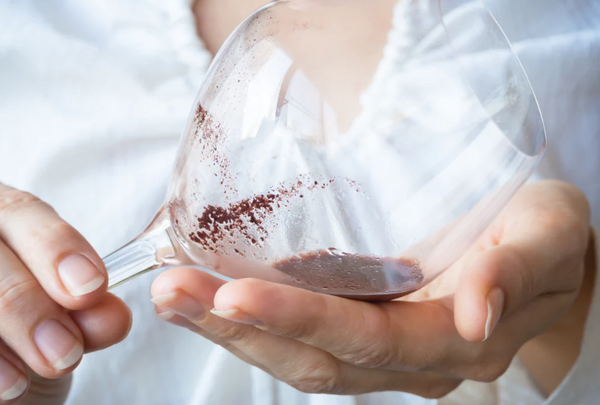
What is Wine Sediment?

Have you ever poured yourself a glass of wine, only to find an unexpected surprise at the bottom of your glass? That mysterious substance is known as wine sediment, and it's a natural occurrence that can happen in both red and white wines. But what is sediment? And should you be worried if you see it in your bottle?
What is Wine Sediment?
Wine sediment, often referred to as "dregs" or "lees," is the solid material that settles at the bottom of a wine bottle over time. It's made of various organic and inorganic compounds, including grape skins, pulp, seeds, and tartrates (crystals of tartaric acid). Sediment can also contain traces of yeast and bacteria from the fermentation process.
Is Sediment Harmful?
Nope, wine sediment is not harmful to consume. It's actually perfectly safe to drink. Many wine enthusiasts consider it a sign of a well-made, unfiltered wine. However, some people may find the sight of wine sediment off-putting because of its gritty texture and appearance.
Does Sediment in the Wine Mean Poor Quality Wine?
Not necessarily. While sediment is more common in certain types of wine, like aged red wines and unfiltered wines, its presence does not necessarily equal poor quality. Many high-quality wines intentionally use a minimal filtration and fining to preserve their natural flavors and aromas, which can result in the formation of sediment over time.
What Types of Wine are More Prone to Sediment?
Aged red wines, especially those that have been bottle-aged for several years, are more prone to sediment formation due to the breakdown of tannins and other compounds over time. Unfiltered and unfined wines, as well as wines that have undergone minimal intervention during the winemaking process, are also more likely to contain sediment.
Can You Remove Wine Sediment?
Yes, you can remove wine sediment by carefully decanting the wine before serving. To do this, slowly pour the wine into a clean decanter, being careful to leave the sediment behind in the bottle. Or you can use a wine filter or strainer to remove sediment directly from the glass.
Contributed by Ray Ibanez, E-Commerce Manager for Plume Ridge Bottle Shop.
